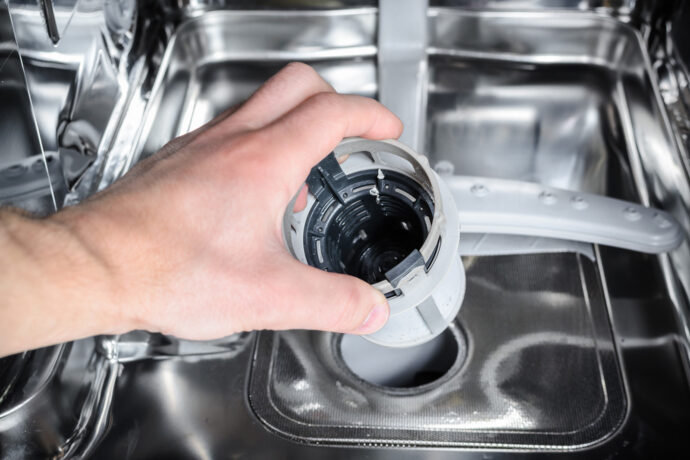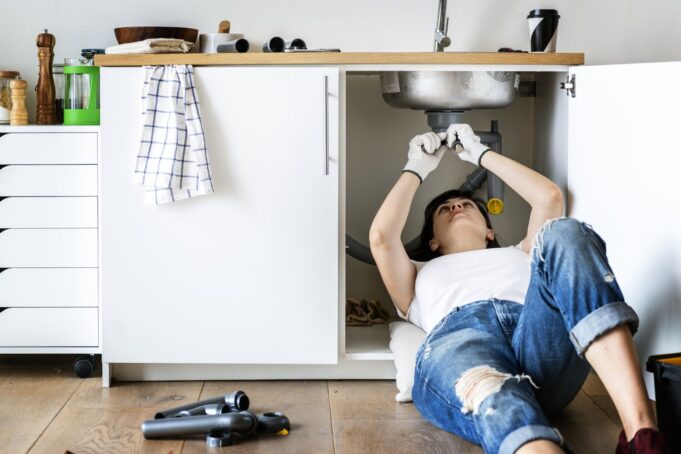We all face the inconvenience of a malfunctioning home appliance at some point. Whether it’s a fridge that’s not cooling or a washing machine that won’t spin, these issues can disrupt our daily lives. Instead of immediately calling a technician or thinking of a replacement, you might want to try fixing it yourself. Doing so can save you money and offer valuable learning experiences. This article provides you with 10 straightforward tips to troubleshoot and repair common household appliances.
Tip 10: Unplug and Plug Back In
The simplest problems often have the simplest solutions. Many electronic glitches resolve by simply unplugging the appliance or reading the manual, waiting for a few minutes, and then plugging it back in. This method works well for devices like microwaves, coffee makers, and even TVs. Essentially, you are giving the machine a quick restart. This action can clear minor software or electrical glitches and bring your appliance back to life.
Tip 9: Check the Manual
Many people overlook the appliance manual, but it is a goldmine of information. Manuals often contain troubleshooting sections that outline common problems and solutions. Before you start taking anything apart, consult the manual to see if the issue you’re facing is something you can handle yourself.
Tip 8: Inspect the Power Source

Before you deem any appliance as faulty, make sure the issue isn’t coming from the power source. Sometimes, the problem is as simple as a flipped circuit breaker or a damaged outlet. Test the outlet with a different appliance to confirm it is supplying power. Likewise, check the circuit breaker box to ensure everything is in order.
Tip 7: Clean and Maintain Regularly
Sometimes, lack of maintenance can be the cause of appliance malfunction. For example, a dirty air filter could cause your air conditioner to work inefficiently. In a coffee maker, old coffee grounds can clog the machine. Regular cleaning and maintenance can prevent these issues and even prolong the lifespan of your appliances.
Tip 6: Replace Simple Parts Yourself
Some parts of home appliances are easy to replace. For example, you can buy a new water filter for your refrigerator or a new hose for your washing machine. These are often simple plug-and-play components that you can install by following the manual or instructional videos online.
Tip 5: Use the Right Tools
Having the right tools for the job is crucial. You’ll commonly need a set of screwdrivers, pliers, and maybe even a multimeter for measuring electrical voltage. Using incorrect or substandard tools can damage your appliance further, making it even more challenging to repair.
Tip 4: Take Photos Before Disassembly
When it comes to taking appliances apart, remembering how to put them back together can be challenging. Before you disassemble anything, take photos from multiple angles. These photos serve as a reference when it’s time to put everything back together.
Tip 3: Seek Online Help

The internet is full of tutorials, forums, and videos that cover almost every type of home appliance repair. Once you’ve identified the problem, there’s a good chance someone else has had the same issue and found a solution. Websites like YouTube are invaluable resources for step-by-step repair guides.
Tip 2: Safety First
Never forget the importance of safety when repairing appliances. Always unplug electrical appliances before you start working on them. If you are dealing with gas appliances, make sure to turn off the gas supply. Wear protective gloves and eyewear to safeguard against any unexpected incidents.
Tip 1: Know When to Call a Professional
While DIY repairs can save you money, some problems require a professional’s touch. Issues like electrical malfunctions or gas leaks pose significant risks and require specialized knowledge and tools. If you’re in over your head or unsure about any step, it’s better to call a qualified technician. The cost of professional repair often outweighs the risk of causing further damage or endangering your safety.
Bonus Tip: Keep Spare Parts Handy
While this isn’t a troubleshooting tip per se, having a stock of essential spare parts can be a lifesaver. Simple items like screws, washers, or gaskets can often fail or get lost during repairs. Having these items readily available will allow you to complete your repair work without unnecessary delays. Consider creating a small repair kit with these parts and keeping it with your toolbox.
The Value of Troubleshooting Skills

Learning how to troubleshoot and repair your appliances is a skill that pays off in multiple ways. First, you save money by avoiding or at least delaying the need for professional repairs or new appliances. Second, understanding the basics of how your appliances work can improve your ability to use them more effectively. This knowledge can also help you troubleshoot new issues as they arise, saving you time and hassle in the future.
Final Thoughts
By now, you should have a better understanding of how to approach the repair of various home appliances. The tips provided range from simple steps like unplugging and plugging the device back in, to more complicated tasks that involve disassembly and part replacement. Always remember to prioritize safety, consult the manual and seek online resources when in doubt.
The overarching principle here is to start simple and work your way up to the more complex issues. Sometimes, the solution is straightforward, and other times it might require a bit more effort and expertise. Either way, armed with these 10 tips, you’re now better prepared to tackle a range of problems that can affect your home appliances.
So the next time your dishwasher, air conditioner, or any other appliance starts acting up, don’t panic. Take a systematic approach to identify and fix the issue. And most importantly, don’t hesitate to call in a professional when the repair job demands specialized skills or poses risks that you’re not equipped to handle.
In conclusion, DIY appliance repair is both achievable and rewarding. Whether you’re looking to save money, gain practical skills, or simply understand the machines you rely on every day a little better, the ability to troubleshoot and repair provides benefits that are well worth the effort.















